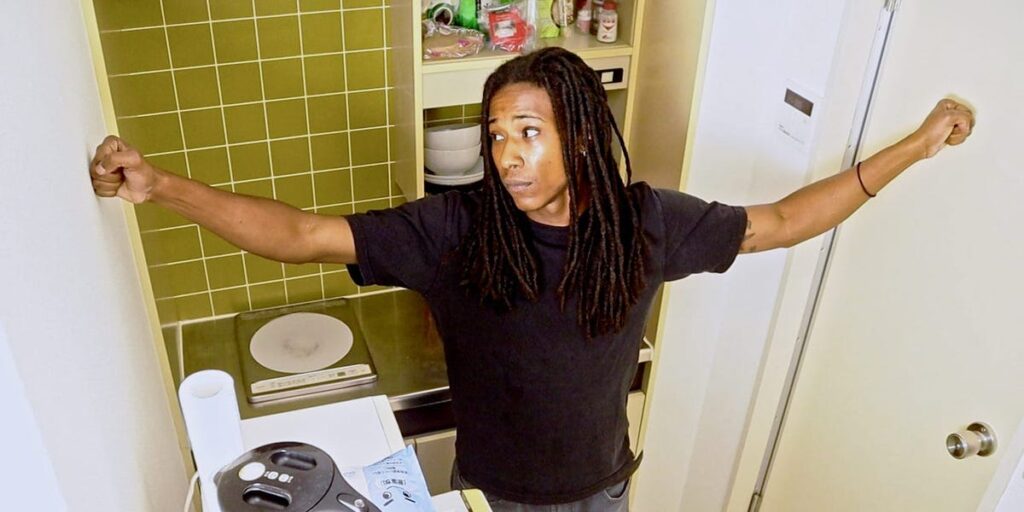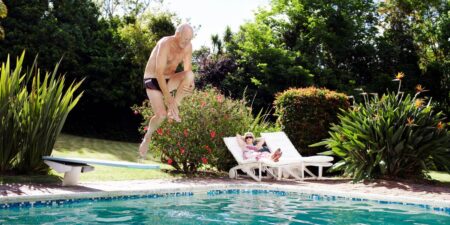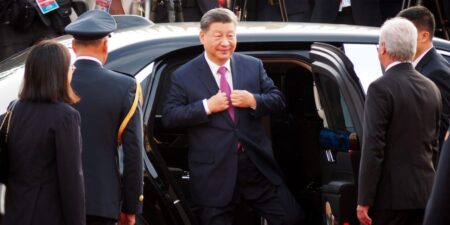- LaJuan, a content creator and part-time English teacher, lives in a micro-apartment in Nagoya, Japan.
- His micro-apartment is 194 square feet, and he pays 32,420 Japanese yen, or about $230, in monthly rent.
- He says living minimally has improved his productivity and helped him achieve financial freedom.
Before LaJuan, 32, moved into his micro-apartment in Nagoya, Japan, he was worried.
The content creator and part-time English teacher wasn’t sure what to expect; he had never lived in such a tiny home before.
The shoebox apartment was merely 194 square feet, with a divider separating the living and sleeping space from the kitchen and toilet. With his arms outstretched, he was even able to touch both walls of his kitchen.
It was going to take some time to get used to, but LaJuan wasn’t about to back down from the challenge since living minimally was his goal.
“When I saw the apartment, I realized it fit in really well with one of what I consider the tenants for living a simpler, more intentional life,” LaJuan, who asked to be identified by only his first name to protect his privacy, told Business Insider.
Moving to Japan
Hailing from Trinidad and Tobago, LaJuan first came to Japan in 2016 on a teaching exchange program after college.
“At that time, my goal in life was to be an ambassador. I studied international relations in college, and I thought the exchange would be really good for my résumé,” LaJuan said.
But getting used to life in a new country was tough, especially since he wasn’t quite fluent in the Japanese language yet.
“I sat with my thoughts a lot, and I realized I didn’t really want to be an ambassador. I was just kind of pursuing something for the sake of it,” he said.
After about three years in Japan, he went back to Trinidad and Tobago to be with his family when his grandmother was diagnosed with cancer.
His return coincided with the pandemic, and his grandmother ended up passing away during the start of lockdown.
“And at the same time, all of my friends were having babies. It was a really strange time,” LaJuan said. “With so many things going on, it made me really rethink what I wanted out of life.”
He realized he always had a passion for video editing, and he decided to dive into it.
“I kind of got myself to a place where I’d be able to get clients and work from anywhere for the most part,” he said. It was around then that he decided he wanted to move back to Japan.
Turning a micro-apartment into a home
LaJuan pays 32,420 Japanese yen, or about $230, in monthly rent for his micro-apartment. It’s located about a three-minute walk from the nearest convenience store and a five-minute walk to the nearest subway station.
The area he lives in has a huge mix of Japanese and non-Japanese residents, unlike in Fuji, where he lived prior.
“Initially, when I lived in Fuji, it was the rural countryside. I have dreads, I stand out like a sore thumb,” he said. “Whereas here, where I live, my next-door neighbor, she’s Japanese, and then the person next to her, it’s an Indian couple.”
Unlike the hustle and bustle of Tokyo and Kyoto, Nagoya — which is situated between the two other cities — feels a bit more laid-back, he said.
Tokyo is the most populated city in Japan. It has about 9.7 million citizens, compared to Nagoya City’s 2.33 million and Kyoto City’s 1.46 million.
“Things are really tight in those spaces, and it’s overwhelming because of the amount of people that live there. Whereas Nagoya, to me, is a perfect balance of both city life and just having some space for yourself,” he added.
It’s also the perfect setting for him to lead a slower, more intentional life.
Simplifying things for the better
When he first arrived in Japan, LaJuan’s house was already much more minimalistic than it was in Trinidad.
Even though he lived in a much bigger place than he does now, he owned just two cups and two plates back then. And whenever he had guests over, they would always ask him why.
“Well, there’s just one of me — I have double what I need. That’s just the way I was thinking about it,” he said.
But he really started embracing the lifestyle when a friend introduced him to the Netflix documentary “Minimalism” during his return to Trinidad.
“I didn’t know it was a movement or anything like that. And after I watched that, it resonated with me,” he said. “I’m like, oh, I’m going to live life purely based on what I want to get out of life, and purely with intention.”
Part of that included living frugally to achieve financial freedom — hence the micro-apartment.
“I want to have financial freedom, and all that really means is I want peace. I don’t want to be burdened by my finances,” LaJuan said. “I could have gotten a bigger place for sure, but here it allows me to live on 25%.”
That way, he’ll always have emergency funds in case he loses his part-time teaching job.
“The things that give me a lot of value, I’ll spend a lot on, and the things that don’t give me value, I won’t spend a lot on,” he said. “The things I care about at this moment are the work that I’m doing, my friends, and my family. I really care about these kinds of things, and they don’t cost any money.”
Not only has living minimally brought clarity in terms of what he wants out of life, but it has also helped his productivity since he doesn’t get distracted as easily.
“I’m ridiculously productive here compared to my old space,” he said. “I have five minutes to procrastinate. That’s it. When I get off the bed, the computer is there watching me.”
Feeling content with life
LaJuan is part of a growing movement of people who are interested in simplifying their lives, including in terms of housing choices.
With the high cost of living in cities, homeownership is becoming increasingly elusive for people all around the world. For some, a minimalist life constitutes downsizing their homes to be debt-free. For others, it involves leaving the city to live in tiny houses.
In LaJuan’s case, he also watches his spending closely. His monthly expenditure — including rent, bills, and recreational funds — is 170,000 Japanese yen, or about $1,100, a month.
It was still a big lifestyle adjustment for him, compared to how he was spending before.
“What it did for me was positive, though, because now I have to be a lot more intentional about things. So if I want to do a trip, for example, I’ll have to save up for a longer period,” he said.
The best part about embracing minimalism is the shift in perspective.
“Living with intention actually makes life so much better because I don’t feel like I’m missing out on anything,” LaJuan said.
“Where I live right now, there are a lot of really nice luxury vehicles, so I see it on a regular basis. There are really nice homes around me too, and not once do I ever think like, ‘Oh no, my life.’ I’m like, ‘Oh, I’m happy for them. I’m happy for me,” he continued.
Have you recently built or renovated your dream home? If you’ve got a story to share, get in touch with me at agoh@businessinsider.com.
Read the full article here
















